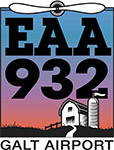The answer to this question is whatever is published in the Chart Supplement for any given airport, unless there is no specific traffic paern altitude (TPA) established for that airport. Contrary to popular belief, there is no standard 1,000 foot above ground level (AGL) paern altitude that applies to all airports or all aircraft.
Some confusion may have arisen from the FAA advisory circular AC 90‐66B dated February 2019 in which the FAA recommended that “airplanes observe a 1,000 foot above ground level (AGL) traffic paern altitude.” However, this document also acknowledges that airport owners and operators, in conjunction with the FAA, are responsible for establishing the traffic paern at any given airport. The AC encourages airport owners and operators to adopt the recommendations contained in the AC, but there is no rule that forces airports to update their traffic paerns.
Pilots should be familiar with 14 CFR §91.103 ‐ Preflight Action, which requires pilots in command to become familiar with all available information concerning the flight before they fly. AC 90‐66B reminds pilots to check appropriate publications, such as the Chart Supplement, where they will find information about traffic paern altitudes for their intended destination airports.
A brief search of the Chart Supplement reveals that most airports (including Class D airports) do not actually specify any TPA, and when they do, they are generally not TPAs that align with the FAA’s recommended 1,000 feet AGL. Pilots flying out of Galt should know that the 10C published traffic paern altitude is 800 feet AGL. But did you know that Brookfield Capitol Drive (02C), Schaumburg Regional (06C) and Grayslake/Campbell (C81) are all other local airports with 800 foot AGL traffic paerns, Bolingbrook’s Clow International (1C5) has a TPA of 830 feet AGL and the TPA at Harvard/Dacy (0C0) is only 600 feet AGL.
When there is no published TPA for an airport is when the FAA’s recommendations on paern altitudes should be followed. According to the AC, light aircraft should use 1,000 feet AGL, heavy and turbine‐powered aircraft should fly the paern at 500 feet above the established traffic paern altitude, and ultralights should operate no higher than 500 feet below the powered aircraft TPA.
If you use the flight planning tool ForeFlight, you might have noticed that for some airports there is a designation of “est.” after the paern altitude value and an arrow symbol you can click on for a drop down list. This means there is no published TPA and the list shows the various altitudes for different types of aircraft estimated by using the field elevation and applying the FAA’s recommendations.
There is one other situation when it is appropriate to fly at a different altitude in the paern and that is when you are performing an IFR circling approach. Many airports have instrument approaches to only one runway or an approach that is not aligned with any runway. For example, the only instrument approach procedure to Galt is the RNAV (GPS)‐B which is straight in for runway 27, but if the winds favor landing on runway 09 aircraft must “circle” the airport to get there. It is necessary for the circling altitude to be lower than the usual TPA, and in some cases it varies for different categories of aircraft. At Galt, the circling altitude is 1,480 feet MSL (605 feet AGL) for all aircraft categories. VFR traffic will most likely never see anyone do this except for instrument training flights.
One last recommendation from AC 90‐66B which applies at all airports. Once you have identified the correct TPA for your destination airport remember that this altitude must be established before entering the traffic paern and maintained until you are at least abeam the approach end of the landing runway.
~Beth Rehm, CFI
JB Aviation Flight Training

